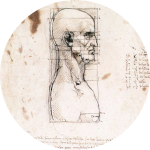 PITUITARY ADENOMAS
PITUITARY ADENOMAS
5.3 Radiotherapy
Prolactinoma
Radiotherapy is used only in rare cases of resistance to medical treatment and seems to produce interesting control rates (between 62.5 and 100%). However, studies are based on small cohorts from which a definitive conclusion can’t be established. Also the effectiveness of surgery and especially medical treatments make the use of radiotherapy uncommon 64,69,72.
Somatotropic Adenomas
Radiation therapy is debated in the young or middle age patient as the aim is to eventually cure the patients. Its onset of action is long ; on the average 25% of the patients are controlled at 5 years and 50% at 10 years52. No technique has demonstrated a superior efficacy to another (conventional or fractionated stereotactic radiotherapy or radiosurgery)14. The choice of technique is thus based on the availability of equipments and the target to be treated (radiosurgery for small tumors or localized residual tumor?). The rate of post-radiation anterior pituitary insufficiency of about 25% at 5 years, justifies an annual follow up.
Corticotropic Adenoma
Radiotherapy is Indicated in case of failure of surgical treatment. It involves the whole pituitary especially if a target is well defined or as complementary treatment to adrenalectomy to prevent Nelson syndrome. As with other adenomas subtypes the technique (fractionated or stereotactic conformal radiotherapy, or radiosurgery) will depend on the tumor volume, distance from the visual pathways, the experience of the medical team who have preference to one technique over another. Control rate for conventional radiotherapy are about 83% at 4 years28 and vary between 17-80% for radiosurgery series due to variations in criteria to define cure13,40 . The effect is delayed in time with an average of two years to control hypersecretion.
Thyrotropic Adenomas
Radiotherapy seems no to be promising, however the number of reported treated cases is small 76.
Non-secreting or no-nfunctioning pituitary adenomas (gonadotrophin and "silent")
In case of residual tumor (20 to 30% of postoperative residual tumor) 50 or postoperative recurrence, the decision about the complementary treatment discussed during the Pituitary Multidisciplinary Consultation Meeting will be based on :
- Anatomical Criteria: volume and location of the residue. A persistent risk to the visual pathways, a significant volume or high expectations of a complete excision should allow for discussion on the possibility of reoperation via transcranial or transphenoidal route.
- Histological Criteria. If the adenoma is "atypical" or grade 2b according to recent classifications, complementary treatment will be discussed, especially if the patient is young.
- The age and the clinical setting. Certainly in young patients where the objective is the control of the residual tumor over decades the tendency is to be more "aggressive" than in the elderly. Nevertheless it is certainly not appropriate to "rush" towards a decision for radiotherapy, particularly in the case of intra-cavernous residues.
No radiotherapy technique (multi fractionated conventional radiotherapy, radiosurgery, fractionated stereotactic radiotherapy) has demonstrated a superior efficacy to another.
Because it is just a tool, it is the experience of the team that matters. « True » single dose radiosurgery (the most studied/researched being the gammaknife) is reserved for small targets (lesions) far away from visual pathways (at least 3 mm). In fact post-radiation effects on visual pathway and pituitary correlate to the tumor volume irradiated15,66. It is the same risk as long term « tumor escape ». Overall, tumor control rate is about 90% at 5 years but may drop to 80% at 10 years when residual tumor is larger> 4 ml. For larger tumor volume or depending on the availability of techniques, hypofractionated stereotactic radiotherapy31 or conventional fractionation selected will give similar control rates65. The risk of anterior pituitary insufficiency is about 25% between 3 and 5 years. Note that failure of tumor control can be at long and far long term which validates a long-term follow up beyond 10 years.
6. Follow up
If we take into account the medium to long term recurrence of hypersecretion (e.g. 12% of prolactinomas treated surgically) or tumor residues of nonfunctional adenomas (evolution at 5 or even 10 years and even after radiotherapy), long term patient follow up is required. Yearly consultations, laboratory tests and often MRI has been adopted by different teams.
 Encyclopædia Neurochirurgica
Encyclopædia Neurochirurgica

